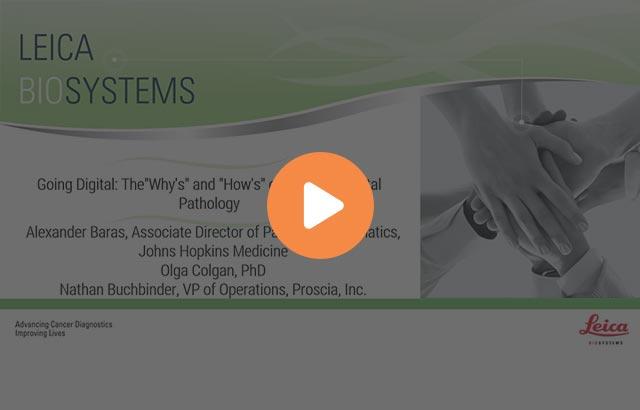
Precision and Personalized Medicine

Precision and personalized medicine are terms used interchangeably. Personalized medicine is an older concept and has led to the idea that prevention and treatment have been created specifically for that patient. According to Genome.gov, “Personalized medicine is an emerging practice of medicine that uses an individual’s genetic profile to guide decisions made in regard to the prevention, diagnosis, and treatment of disease.”1 The President’s Council of Advisors on Science and Technology defines personalized medicine as “the classification of individuals into subpopulations that differ in their susceptibility to a particular disease or their response to a specific treatment. Preventive or therapeutic interventions can then be concentrated on those who will benefit, sparing expense and side effects for those who will not”.2 The term precision medicine gained popularity with the 2011 report from the National Research Council.3 Precision medicine is treatment or prevention approaches based on genetics, environmental factors, and lifestyle targeted to individuals or populations.4 Precision medicine is a medical strategy or model for health care delivery that defines a disease at a higher resolution to enable the more precise targeting of disease subgroups with new therapies.5 For the success of the precision medicine model of healthcare, it will need to rely on the patient, digital health, genomics, and other molecular technologies, data sharing, and data science.6
Background
The human body contains trillions of cells. Within each cell nuclei are chromosomes responsible for transferring genetic information from one generation to another. Deoxyribo Nucleic Acid (DNA) makes up the chromosome (and a small amount in the mitochondria) to control proteins to determine the structure and function of the body’s tissues and cells. Protein consists of amino acids, and genes are part of the DNA that determine the amino acids’ order that makes up the protein. When genes do not act the way they should, this is called a mutation or variant, which can cause illnesses or diseases.7
There are approximately 6000 known genetic disorders divided into four categories, including:8
- Single-gene Mutation or Monogenic Disorder – one defective gene is present and inherited. Subcategories of a single-gene mutation are one defective gene in either parent (autosomal dominant); a defective gene from each parent (autosomal recessive); the defective gene is present on the female (X) chromosome (X-linked disorders). Examples of this disorder are hemophilia, cystic fibrosis, sickle cell anemia, and familial hypercholesterolemia.
- Multiple Genes Mutations or Multifactorial Inheritance Disorder – This disorder is the mutation of multiple genes and the effects from the environment. Examples of this disorder are heart disease, diabetes, Alzheimer’s disease, arthritis, and cancer.
- Chromosomal Changes – Chromosomal abnormalities such as the number and structure can cause disease. Examples of this disorder are Down and Turner syndromes.
- Mitochondrial Mutations – This disorder is the mutation in the non-nuclear DNA. of the mitochondria. Examples include myoclonic epilepsy and mitochondrial encephalopathy.9
Genetics and genomics are similar concepts. Genetics is an older idea and concerned with a single gene.
Genomics deals with a broader scope encompassing all genes. According to the NIH National Human Genome Institute, genomic medicine is a subset of precision medicine emerging using molecular information about individuals to guide their clinical care. Jeanette McCarthy, Ph.D., MPH, explains that precision medicine uses genomics across the lifespan – from preconception to adulthood. Some examples include:
- Preconception Carrier Screening – testing to determine the potential of having a child at risk for a genetic disorder such as cystic fibrosis, sickle cell anemia, or Tay Sachs. There are commercial tests now available for 100 disorders
- Prenatal diagnosis – identification of fetal DNA in the maternal bloodstream to test for chromosomal abnormalities
- Diagnosis for rare diseases in children – a few examples are Cat Eye Syndrome, Lichen Planus, and Rotor’s Syndrome
- Adulthood – genetic testing in breast and colon cancer10
Genomics and Cancer
The cancer process shows that genes mutate to cause unlimited cell growth. As the cell growth remains unchecked, it becomes a tumor. Human genome sequencing (decoding the DNA) has allowed for a closer look at the tumor cells. Tumor cells have mutations, and these variants are different depending on the type of cancer. Each person’s cancer is unique, and why some traditional therapies, such as surgery, chemotherapy, and radiation, may not be effective.11 Identifying the cancer driver mutations in the tumor cells through genome sequencing (Next-Generation Sequencing) will allow for more targeted treatments.12
The Cancer Genome Atlas Program, set up by the US National Cancer Institute (NCI), molecularly characterized over 20,000 primary cancer and matched normal samples spanning 33 cancer types. This data has already led to improvements in the prevention, diagnosis, and treatment of cancer.13An excellent example of this is that ten years ago, lung cancer was either diagnosed as small cell or non-small cell, but today 30 genetic mutations are considered.14
Building on the Cancer Genome Atlas Program, in 2020, the Pan-Cancer Analysis of Whole Genomes (PCAWG) Project analyzed entire tumor genomes for 38 types of cancer. The PCAWG project was able to find at least one driver mutation in about 95% of the tumor samples, which could allow more cancer patients to receive a drug that targets the protein made by that driver gene. The PCAWG has begun to develop a database of 100,000 patients so that physicians can use it to determine the best treatment based on the patient’s tumor genome type.15
The Benefits of Precision Medicine
In 2003, sequencing of the first human genome occurred. This technology is in the early stage of being implemented into clinical medicine. Benefits of implementation include:
- Ability to use patient’s genetic and molecular information as part of their medical care
- Improvement of choosing the treatment that works best for specific patients
- Increased knowledge of the underlying mechanisms which various diseases occur
- Better approaches to preventing, diagnosing, and treating diseases
- Integration of electronic health records in patient care to access medical data easily16
Obstacles for Precision Medicine
The young field of Precision Medicine continues to evolve, although it does have challenges. Some of these challenges include:
- Cost – The Precision Medicine initiative will cost millions of dollars. Technologies for sequencing DNA, designing databases for large amounts of patient data, and developing targeted treatments will be expensive.17
- Amount of data needed – to promote discoveries and improvements in precision medicine, it is essential that information collected in a dedicated database can be accessible worldwide to process and interpret the growing volumes of data rapidly.18
- Insufficient technologies – To move the Precision Medicine initiative forward, this will involve designing new tools to collect, analyze, and share large medical data sets. Once the data is collected, artificial intelligence will need to collate and interpret the data.
- Limited knowledge – The area of precision medicine is rapidly developing, and clinicians may find it problematic to keep up with new treatment options. Multiple molecular diagnostic tests are available, making it difficult to determine the proper test for the patient. Genomic reports include large amounts of data, and clinicians may find it challenging to interpret the information and prescribe treatment options.19
- Gaps in research – Precision Medicine is growing and changing rapidly. Large randomized clinical trials may no longer be an option to generate the evidence needed to show an improvement in patient outcomes.20
Closing
Precision Medicine is advancing rapidly. For example, in 2015, in the United States, as part of the National Research Agenda, President Obama announced a government-funded initiative called “All of US” with plans to enroll 1 million Americans. This project was created to share data generated over ten years from genomic sequencing, electronic medical records, and reported personal information to increase the understanding of disease biology, pathogenesis, and advance precision health care. Global Initiates are also underway in many countries. Precision Medicine will change the way clinicians are practicing medicine. Today, most patients with the same disease receive the same drug at the same dose at the same time. In the future, and with the advancements of precision medicine, patients will receive targeted treatments based on their genomic mutations with a higher likelihood of success, fewer adverse events, more prolonged survival, and improved quality of life.21
Download the Precision and Personalized Medicine resource now.
발표자 소개

Rhondalyn Bomkamp, is an accomplished Director/Nurse Leader with a proven track record of effectively managing complex projects and health system performance improvement initiatives. As a registered nurse, she has experience in Quality and Patient Safety and Project Management/Development in the oncology, cardiac and intensive care arenas. She has strong clinical knowledge and management experience with the ability to recognize opportunities for improvement, coordinate the work of many areas and develop collaborative relationships with diverse groups to facilitate the implementation of change.
참조 문헌
- Personalized Medicine. Genome.gov. https://www.genome.gov/genetics-glossary/Personalized-Medicine
- President’s Council of Advisors on Science and Technology. Priorities for personalized medicine. 2008. Sep, http://www.ostp.gov/galleries/PCAST/pcast_report_v2.pdf. Accessed June 19, 2009
- National Research Council (US.) Committee on A Framework for Developing a New Taxonomy of Disease. Toward Precision Medicine: Building a Knowledge Network for Biomedical Research and a New Taxonomy of Disease. National Academies Press (US); 2011. https://pubmed.ncbi.nlm.nih.gov/22536618
- What is the difference between precision medicine and personalized medicine? What about pharmacogenomics?: MedlinePlus Genetics. medlineplus.gov. https://medlineplus.gov/genetics/understanding/precisionmedicine/precisionvspersonalized/
- Ashley EA. Towards precision medicine. Nature Reviews Genetics. 2016;17(9):507-522. doi:10.1038/nrg.2016.86
- Ginsburg GS, Phillips KA. Precision Medicine: From Science to Value. Health Affairs. 2018;37(5):694-701. doi:10.1377/hlthaff.2017.1624
- WHO | Genes and human diseases. WHO. Accessed May 11, 2021. https://www.who.int/genomics/public/geneticdiseases/en/#:~:text=Dysfunctional%20gene%20behaviour%20is%20commonly
- Genetic Disease: 4 Types and List of 39. eMedicineHealth. https://www.emedicinehealth.com/types_and_list_of_genetic_diseases/article_em.htm
- Conrad M. 4 Types of Genetic Diseases - Symptoms, Causes & Human Genome. MedicineNet. Published 2019. https://www.medicinenet.com/genetic_disease/article.htm
- Genomics and Precision Medicine. www.youtube.com. Accessed May 21, 2021. https://www.youtube.com/ watch?v=jt7mqtuDUic
- How Precision Medicine Is Changing Cancer Treatment. Next Avenue. https://www.nextavenue.org/precision-medicine-changing-cancer-treatment/. Published June 26, 2019
- Morash M, Mitchell H, Beltran H, Elemento O, Pathak J. The Role of Next-Generation Sequencing in Precision Medicine: A Review of Outcomes in Oncology. Journal of Personalized Medicine. 2018;8(3):30. doi:10.3390/jpm8030030
- The Cancer Genome Atlas Program. National Cancer Institute. Published 2019. https://www.cancer.gov/about-nci/organization/ccg/research/structural-genomics/tcga
- Nogrady B. How cancer genomics is transforming diagnosis and treatment. Nature. 2020;579(7800): S10-S11. doi:10.1038/d41586-020-00845-4
- Massive cancer genome study reveals how DNA errors drive tumor growth. Science | AAAS. https://www.sciencemag.org/news/2020/02/massive-cancer-genome-study-reveals-how-dna-errors-drive-tumor-growth. Published February 7, 2020.
- What are some potential benefits of precision medicine and the Precision Medicine Initiative?: MedlinePlus Genetics. medlineplus.gov. https://medlineplus.gov/genetics/understanding/precisionmedicine/potentialbenefits/
- What are some of the challenges facing precision medicine and the Precision Medicine Initiative?: MedlinePlus Genetics. medlineplus.gov. https://medlineplus.gov/genetics/understanding/precisionmedicine/challenges/
- Madhavan S, Subramaniam S, Brown TD, Chen JL. Art and Challenges of Precision Medicine: Interpreting and Integrating Genomic Data into Clinical Practice. American Society of Clinical Oncology Educational Book. 2018;(38):546-553. doi:10.1200/edbk_200759
- Levit LA, Kim ES, McAneny BL, et al. Implementing Precision Medicine in Community-Based Oncology Programs: Three Models. Journal of Oncology Practice. 2019;15(6):325-329. doi:10.1200/jop.18.00661
- Ginsburg GS, Phillips KA. Precision Medicine: From Science to Value. Health Affairs. 2018;37(5):694-701. doi:10.1377/hlthaff.2017.1624
- Levit LA, Kim ES, McAneny BL, et al. Implementing Precision Medicine in Community-Based Oncology Programs: Three Models. Journal of Oncology Practice. 2019;15(6):325-329. doi:10.1200/jop.18.00661
Related Content
라이카 바이오시스템즈 Knowledge Pathway 콘텐츠는 에서 이용할 수 있는 라이카 바이오시스템즈 웹사이트 이용 약관의 적용을 받습니다. 법적고지. 라이카 바이오시스템즈 웨비나, 교육 프레젠테이션 및 관련 자료는 특별 주제 관련 일반 정보를 제공하지만 의료, 규정 또는 법률 상담으로 제공되지 않으며 해석되어서는 안 됩니다. 관점과 의견은 발표자/저자의 개인 관점과 의견이며 라이카 바이오시스템즈, 그 직원 또는 대행사의 관점이나 의견을 나타내거나 반영하지 않습니다. 제3자 자원 또는 콘텐츠에 대한 액세스를 제공하는 콘텐츠에 포함된 모든 링크는 오직 편의를 위해 제공됩니다.
모든 제품 사용에 다양한 제품 및 장치의 제품 정보 가이드, 부속 문서 및 작동 설명서를 참조해야 합니다.
Copyright © 2025 Leica Biosystems division of Leica Microsystems, Inc. and its Leica Biosystems affiliates. All rights reserved. LEICA and the Leica Logo are registered trademarks of Leica Microsystems IR GmbH.



